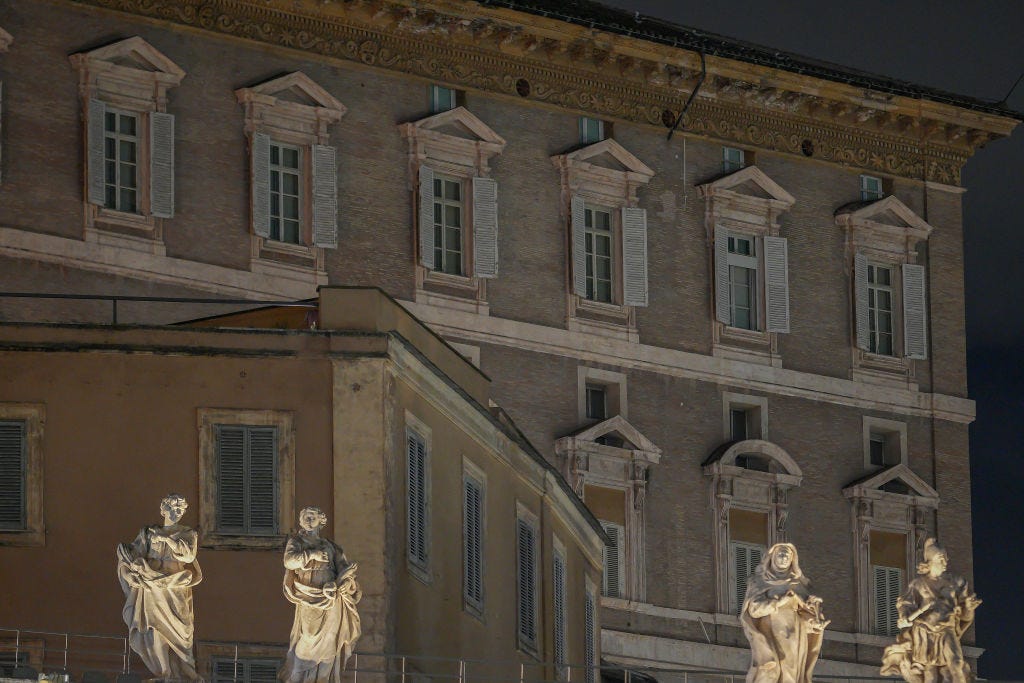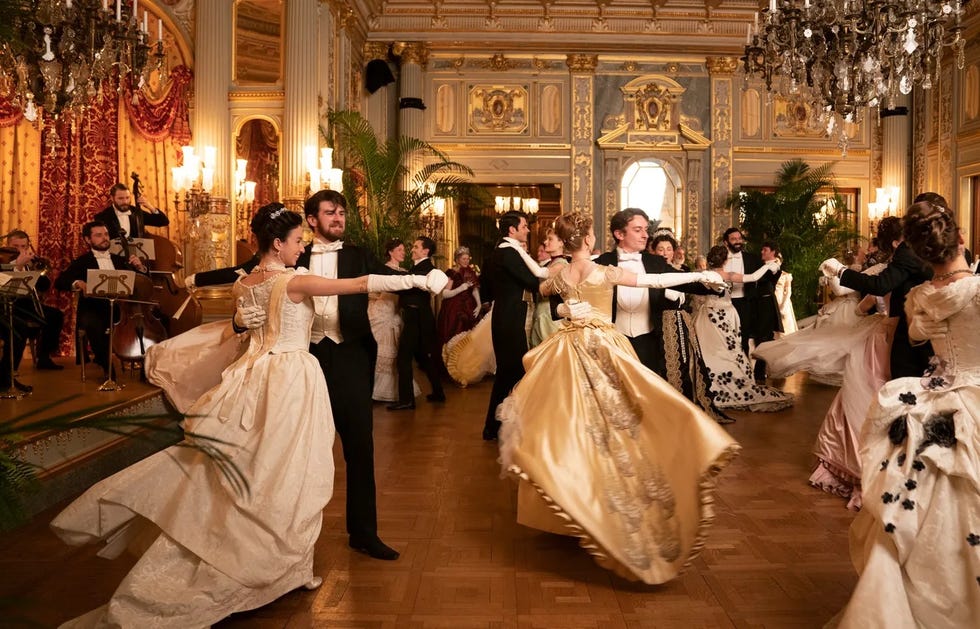«The residence in the Apostolic Palace is tastefully decorated and large, but not luxurious,» Pope Francis once explained. “It is big and spacious, but the entrance is really tight. People can come only in dribs and drabs, and I cannot live without people. I need to live my life with others.” When Jorge Mario Bergoglio stepped onto the balcony of St. Peter’s Basilica as Pope Francis on March 13, 2013, he ushered in a new kind of papacy. In the days after his election, as the world waited to see what kind of pontiff he would be, Francis made a decision that broke with more than a century of Vatican tradition: He would not move into the lavish papal apartments in the Apostolic Palace. Instead, he chose to remain in a modest suite at Casa Santa Marta, the Vatican guesthouse where cardinals stay during conclaves.
This seemingly simple choice sent shockwaves through the Vatican establishment and became emblematic of Francis’s papacy—one defined by humility, accessibility, and a determined rejection of the trappings of power. Yesterday, on April 21, 2025, when Cardinal Kevin Farrell announced the pontiff’s death from the chapel of this same modest guesthouse, the world was reminded of how Francis had transformed the papacy through his living arrangements as much as through his words.
Inside the Apostolic Palace
Located northeast of St. Peter’s Basilica, this massive complex contains over 1,000 rooms spread across 1.7 million square feet. Construction of the current palace began in 1589 under Pope Sixtus V and was completed by his successors. For more than a century, it had served as the traditional residence for the head of the Catholic Church.
The papal apartments themselves occupy the third (top) floor of the Apostolic Palace, wrapping around the Courtyard of Sixtus V (Cortile di Sisto V). The suite includes a chapel, multiple offices, the pope’s bedroom, a dining room, kitchen, and additional rooms for secretaries and household staff. Since 1903, when St. Pius X became the first pope to live there, these apartments have been completely remodeled by Pope Paul VI in 1964 and undergone modifications by each subsequent pontiff.
Beyond being merely the pope’s residence, the Apostolic Palace functions as the administrative heart of Vatican City. It houses various offices of the Catholic Church, the Holy See, private and public chapels, Vatican Museums, and the Vatican Library, including the famed Sistine Chapel with the Michelangelo masterpiece. In many ways, it serves as the Vatican’s equivalent to the White House—not just a residence but the center of governance.
Why Didn’t Pope Francis Live in the Apostolic Palace?
When Cardinal Jorge Mario Bergoglio became Pope Francis in March 2013, he shocked Vatican observers by declining to move into the papal apartments. Instead, he chose to remain in the Domus Sanctae Marthae (Latin for Saint Martha’s House; Italian: Casa Santa Marta), the Vatican guesthouse where cardinals stay during conclaves.
«He is experimenting with this type of simple living,» Vatican spokesman Federico Lombardi explained at the time, noting that the arrangement allowed Francis «to live in community with others.” This decision broke with more than a century of tradition and reinforced the new pope’s reputation for austerity.
The choice wasn’t entirely surprising for those familiar with Bergoglio’s past. As archbishop of Buenos Aires, he had similarly refused to occupy the grand Bishop’s Palace, preferring more modest quarters and often cooking his own meals. This pattern of humble living became the heart of his approach to the papacy.
Inside Casa Santa Marta
Casa Santa Marta stands in stark contrast to the opulence of the Apostolic Palace. Built in 1996 during John Paul II’s pontificate on the site of an ancient hospice for the poor, the five-story building resembles a modest hotel more than a papal residence. Located adjacent to St. Peter’s Basilica in Vatican City, it primarily functions as a guesthouse for clergy having business with the Holy See.
After the conclave, Francis initially stayed in room 207, which he had been assigned by lot along with the other cardinals. He later moved to Suite 201, a slightly larger accommodation with about 538 square feet of space. The suite consists of a sitting area with a couple of chairs, a sofa, a desk, a bookcase, and a crucifix, plus a monastic bedroom with a dark wooden bed, wardrobe, and nightstand. The fluorescent lighting gave the space a somewhat institutional feel, but as Vatican watchers noted, «the Pope isn’t one to take notice.”
Francis’s quarters were furnished with basic necessities, including a wooden standing crucifix and a small statue of Our Lady of Luján, the Marian patroness of Argentina, Uruguay, and Paraguay. Outside his bedroom, two Pontifical Swiss Guards worked day and night shifts, and a statue of Saint Joseph stood nearby, under which the pontiff placed prayer requests.
Each morning, Pope Francis would rise before dawn in these quarters. After prayer and contemplation, he would deliver a homily during morning Mass in the guesthouse chapel. His days were filled with meetings, phone calls with colleagues and friends, and various engagements. Unlike his predecessors who often dined alone, Francis took his meals in the common dining room downstairs, joining other residents of Casa Santa Marta.
This communal living arrangement allowed Francis to maintain daily contact with ordinary priests and bishops who work at the Vatican, as well as visiting clergy, and reflected his desire to avoid isolation and remain connected to the broader Church community.
Pope Francis’ Lasting Legacy of Simplicity
Francis’s choice of residence was a powerful symbol of his vision for the Church. By declining the grand papal apartments, he demonstrated his commitment to simplicity and solidarity with ordinary people. The decision aligned perfectly with his frequent calls for a «poor Church for the poor» and his critiques of excessive clerical privilege.
In Casa Santa Marta, Francis found a space that allowed him to realize different objectives: prioritizing the pastoral aspect of his mission, providing a practical example of humility, remaining firmly attached to the Gospel message, and avoiding what he saw as «curial quicksand.”
As the cardinals now gather at Casa Santa Marta to elect his successor, they do so in a Church transformed by Francis’s example. Whether the next pope will follow his predecessor’s modest path or return to the grand tradition of the Apostolic Palace remains to be seen. But Francis’s legacy of humble living has forever changed what it means to occupy the Chair of St. Peter.

Julia Cancilla is the engagement editor (and resident witch) at ELLE Decor, where she manages the brand’s social media presence and covers trends, lifestyle, and culture in the design world. Julia built her background at Inked magazine, where she grew their social media audiences by two million, conducted interviews with A-list celebrities, and penned feature articles focusing on pop culture, art and lifestyle. Over her five years of digital media experience, Julia has written about numerous topics, from fashion to astrology.










